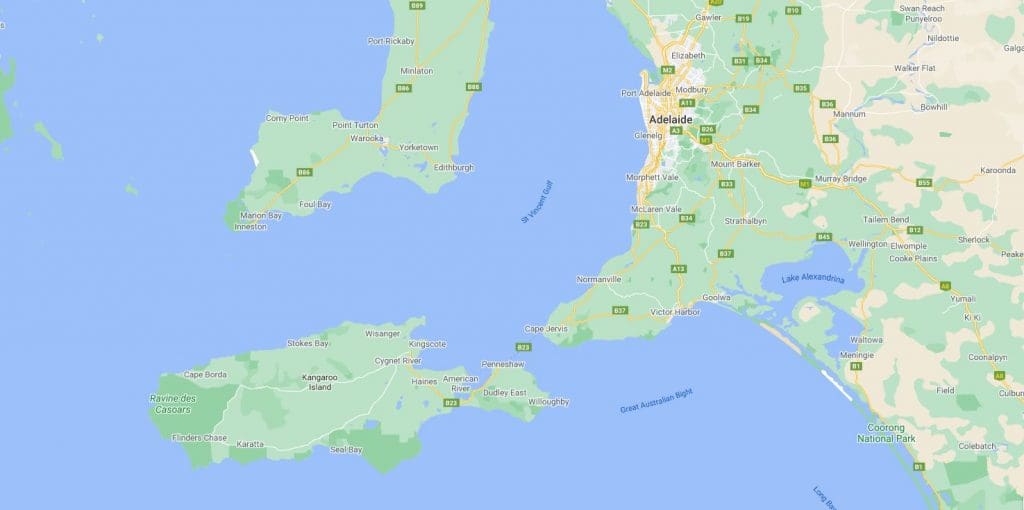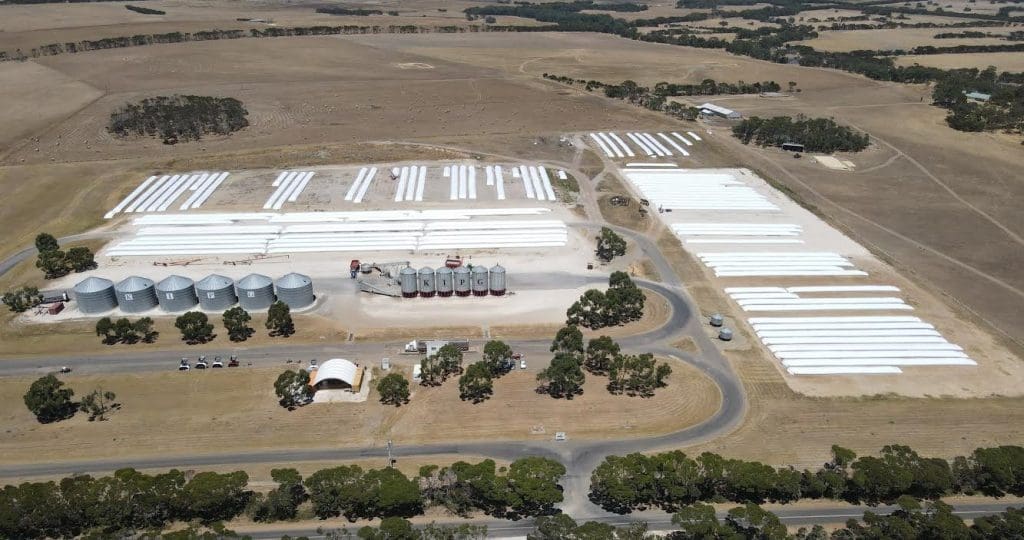
(Source: Google Maps)
WATERLOGGING has been a challenge for grain growers this winter on South Australia’s Kangaroo Island where crops are grown under the island’s GM-free status.
Kangaroo Island retained its GM-free status when the SA Government ended a moratorium on GM crops for the rest of the state in November last year.
While grazing remains the biggest agricultural activity on the island, a niche grains industry has developed with growers supplying to Kangaroo Island Pure Grain which specialises in marketing grain free of GM content.
Wet conditions this winter have impacted the main crops on the island – canola, wheat, barley, faba and broad beans – and the smaller plantings of lupins, oats and barley for feed.
Nutrien Ag Solutions senior account manager agronomy, Daniel Pledge, said this season had been a tough one for the island’s winter grain growers.
“Sporadic rains early made it hard to get crops in and didn’t lead to great germinations. Then into June the temperatures dropped and from the third week of June we have had a very wet spell. Some people have had 200 to 300 millimetres through to the end of July,” he said.
“Hence, waterlogging is a prominent concern.
“The other impact that has is on the ability to get jobs done. The limited opportunities to spray or spread fertiliser have made management decisions very challenging.”
Mr Pledge said conditions had improved in the past couple of weeks and “the tide is receding”.
“Farmers can reassess and make adjustments to the plan and go from there. Certain crops will suffer and others will probably benefit, particularly beans,” he said.
Rain impact
Kangaroo Island Pure Grain general manager, Dennis Jamieson, said the crops on Kangaroo Island this year would be a mixed bag.
“We have had a lot of rain. Some farms have had 300 millimetres over two months, so the canola has wet feet. We need some sunny days to dry things out and let the roots breathe a bit,” he said.
“It has been good for the broad beans. They like water. The cereals seem to be handling it okay so far.”
Mr Jamieson said the first loads of canola were normally harvested around the third week of November, while barley and wheat came in in December and broad beans followed.
“Harvest on Kangaroo Island can be very fickle. Sometimes we have done harvest in 28 days, sometimes it has taken three-and-a-half months,” he said.
“We get quite high humidity. In a good year farmers can reap from 8 o’clock in the morning until 12 o’clock at night. But in an average year they might only get a window between 10 and 11 o’clock in the morning till 6 o’clock at night before the moisture comes back in.”
There are currently 16 growers supplying grain to Kangaroo Island Pure Grain, cropping around 9000 hectares. Last year they delivered 28,000 tonnes of grain to the company.
The company has 8000 tonnes of hard storage at its handling site on the island. The rest goes into silo bags to be processed for export.
There is a packing, cleaning and grading facility at Osborne in Adelaide, and the head office is at Mt Barker.
Canola is cleaned on Kangaroo Island and exported through the Osborne plant to Japan and Korea.
Broad beans go to Indonesia, Malaysia, and the Middle East.
Soft wheat is grown for companies such as Allied Mills for biscuit production, while most of the hard wheat is for stock feed.
Barley goes to the Coopers malting plant in Adelaide.

Kangaroo Island Pure Grain has 8000 tonnes of hard storage on the island and additional capacity in silo bags.
Selling point
Mr Jamieson said the company had played a key part in persuading the SA Government to allow Kangaroo Island to maintain its GM-free status.
“We were the only company that could produce evidence that we were making money from non-GM products, especially the canola. GM-free is very important to our canola customers in Japan. They don’t want any GM,” he said.
While the confirmation of the island’s GM-free status late last year hasn’t provided a selling point yet, Mr Jamieson said it would be a niche marketing opportunity going forward.
“We are waiting on the new year crop to come in, so we expect to be doing some trading around November-December once we get an idea of the numbers we have,” he said.
Grain Central: Get our free cropping news straight to your inbox – Click here

HAVE YOUR SAY